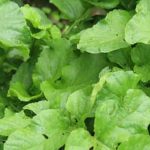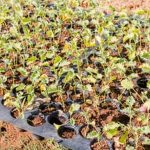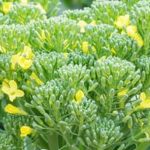Vegetable gardening in the Pacific Northwest offers a unique and rewarding experience for gardeners due to its mild climate, abundant rainfall, and fertile soil. Whether you are a novice or experienced gardener, the region’s specific conditions present both challenges and opportunities for cultivating a thriving vegetable garden. From selecting the right vegetables to understanding the climate patterns, there are various factors to consider when embarking on your gardening journey in this lush corner of the country.
The Pacific Northwest’s temperate maritime climate is characterized by mild winters and cool summers, creating an ideal environment for growing a wide variety of vegetables. The region’s ample rainfall provides natural irrigation for crops, but gardeners must also navigate occasional challenges such as overcast skies and shorter daylight hours. Understanding these unique growing conditions is essential for successful vegetable gardening in the Pacific Northwest.
In this guide, we will delve into the specifics of vegetable gardening in the Pacific Northwest, including recommended crops, soil preparation techniques, pest management strategies, seasonal planting tips, and more. By embracing the beauty and benefits of vegetable gardening in this region, you can enjoy a bountiful harvest while connecting with nature and community resources that support sustainable practices. Let’s explore how you can cultivate a thriving vegetable garden in the picturesque landscape of the Pacific Northwest.
The Climate and Growing Conditions in the Pacific Northwest
The Pacific Northwest region is known for its unique climate and growing conditions that can both challenge and benefit vegetable gardeners. With its moderate temperatures, ample rainfall, and fertile soil, the Pacific Northwest offers a great environment for vegetable gardening. Understanding the climate and growing conditions in this region is essential for a successful harvest.
The maritime climate of the Pacific Northwest brings mild, wet winters and warm, dry summers. This presents a longer growing season compared to other regions, allowing for multiple planting cycles throughout the year. The consistent moisture from rainfall can be both an advantage and a challenge for vegetable gardens, as it provides hydration but also creates ideal conditions for certain pests and diseases like powdery mildew or slugs.
When planning your vegetable garden in the Pacific Northwest, it’s crucial to select crops that thrive in this specific climate. Some of the best vegetables to grow in this region include leafy greens like kale, chard, and lettuce, as well as root vegetables such as carrots, beets, and radishes.
Additionally, crops like tomatoes, beans, peppers, and zucchini also do well in the Pacific Northwest’s moderate temperatures and abundant moisture levels. By choosing suitable vegetables for your garden based on the climate of the region, you can set yourself up for a successful harvest of fresh produce.
- Leafy greens: kale, chard, lettuce
- Root vegetables: carrots, beets, radishes
- Other vegetables: tomatoes, beans, peppers
Best Vegetables to Grow in the Pacific Northwest
When it comes to vegetable gardening in the Pacific Northwest, it is essential to choose vegetables that thrive in the unique climate and growing conditions of this region. While the cool, moist climate can pose challenges, there are a variety of vegetables that do exceptionally well in the Pacific Northwest. Here are some of the best vegetables to consider planting in your Pacific Northwest garden:
- Tomatoes: Despite the region’s reputation for rainy weather, tomatoes can be successfully grown in the Pacific Northwest with proper care and protection from excess moisture. Varieties like Oregon Spring, Stupice, and Sungold are known to perform well in this area.
- Kale: Known for its cold hardiness, kale is a popular choice for Pacific Northwest vegetable gardens. Varieties like Lacinato (also known as dinosaur kale) and Russian Red Kale are excellent options for continuous harvesting.
- Broccoli: Broccoli thrives in the cool temperatures of the Pacific Northwest and can produce bountiful harvests if given adequate care. Varieties like Green Magic and De Cicco are well-suited for this region.
Other vegetables that tend to do well in the Pacific Northwest include carrots, beets, lettuce, peas, and radishes. When selecting vegetables for your garden, consider factors such as your specific microclimate, sun exposure, and soil type to ensure successful growth.
In addition to choosing the right vegetables for your Pacific Northwest garden, it is important to pay attention to proper spacing, watering needs, and maintenance practices to ensure a successful harvest. By selecting a variety of crops that are well-suited to the region’s climate and following best practices for cultivation, you can enjoy a bountiful harvest from your vegetable garden year after year.
Soil Preparation and Maintenance Tips for Vegetable Gardening in the Pacific Northwest
The key to successful vegetable gardening in the Pacific Northwest lies in proper soil preparation and maintenance. The region’s unique climate and growing conditions require special attention to ensure that your plants thrive. When starting a vegetable garden in this area, it is essential to focus on preparing the soil to provide the necessary nutrients for your plants to grow healthy and strong.
One crucial step in soil preparation for vegetable gardening in the Pacific Northwest is testing the pH levels of your soil. Most vegetables prefer a slightly acidic soil with a pH range between 6.0 and 7.0.
You can easily test your soil using a home kit or by sending a sample to a local agricultural extension office for analysis. Based on the results, you can amend your soil with organic matter such as compost or peat moss to adjust the pH levels accordingly.
In addition to pH levels, it is important to ensure that your soil has good drainage to prevent waterlogging, which can lead to root rot and other issues for your plants. Adding organic matter like compost not only helps with adjusting pH levels but also improves soil structure, aeration, and drainage. Regularly incorporating compost into your garden beds will help maintain soil fertility and promote healthy plant growth throughout the growing season.
| Aspect | Description |
|---|---|
| pH Levels Testing | Test the pH levels of your soil ranging between 6.0-7.0. |
| Drainage Improvement | Ensure good drainage by adding organic matter like compost. |
Pest and Disease Management in Pacific Northwest Vegetable Gardens
Pest and disease management is an essential aspect of maintaining a successful vegetable garden in the Pacific Northwest. The region’s temperate climate and abundant rainfall can create favorable conditions for various pests and diseases to thrive. It is crucial for gardeners to be proactive in preventing, identifying, and treating these issues to ensure a bountiful harvest.
One of the most common pests in vegetable gardens in the Pacific Northwest is slugs. These slimy creatures can quickly decimate young seedlings and tender plants. To prevent slug damage, gardeners can employ physical barriers such as copper tape or diatomaceous earth around plant beds. Additionally, keeping the garden free of debris and avoiding overwatering can help reduce slug populations.
Diseases like powdery mildew and tomato blight are also prevalent in the Pacific Northwest due to the region’s humid conditions. Crop rotation, proper spacing between plants, and good air circulation can help prevent the spread of fungal diseases. If signs of disease appear, it is essential to promptly remove affected plants to prevent further contamination. Using organic fungicides or homemade remedies like neem oil can also aid in managing fungal infections effectively.
| Pest/Disease | Management Tips |
|---|---|
| Slugs | Use copper tape or diatomaceous earth as barriers, keep the garden clean, and avoid overwatering. |
| Powdery Mildew/Tomato Blight | Practice crop rotation, ensure proper plant spacing and air circulation; remove affected plants promptly; utilize organic fungicides or neem oil. |
Seasonal Planting Guide for Successful Vegetable Gardening in the Pacific Northwest
When it comes to vegetable gardening in the Pacific Northwest, understanding the seasonal planting guide is crucial for a successful harvest. The region’s unique climate, with mild and wet winters and warm, dry summers, presents both challenges and opportunities for gardeners. By following a well-planned seasonal planting schedule, you can make the most of the growing conditions in this area.
Spring Planting
In the Pacific Northwest, spring planting usually begins in March or April, depending on the specific microclimate of your location. Cool-season vegetables like lettuce, spinach, kale, broccoli, and peas thrive during this time. It’s important to start seeds indoors or purchase seedlings for warm-season crops like tomatoes, peppers, and squash to get a head start on the growing season.
Summer Planting
As summer temperatures rise in the Pacific Northwest, it’s time to plant heat-loving vegetables such as beans, corn, cucumbers, and zucchini. Make sure to provide adequate water and mulch around plants to retain moisture during dry spells. Consider succession planting for crops like lettuce and radishes to ensure a continuous harvest throughout the season.
Fall Planting
Fall is a great time for vegetable gardening in the Pacific Northwest as cooler temperatures return. Sow cold-hardy crops such as carrots, beets, turnips, and Swiss chard for late-season harvests. Extend your growing season by using row covers or cold frames to protect plants from frost. Consider planting garlic cloves in the fall for a bountiful harvest next year.
By following this seasonal planting guide tailored to the Pacific Northwest’s climate and growing conditions, you can maximize your vegetable garden’s productivity throughout the year. Experiment with different varieties and techniques to find what works best for your specific location and enjoy a diverse selection of fresh produce from your own backyard.
Watering and Irrigation Techniques for Vegetable Gardens in the Pacific Northwest
Importance of Proper Watering and Irrigation
Watering and irrigation are crucial aspects of successful vegetable gardening in the Pacific Northwest. The region’s unique climate, characterized by mild, wet winters and dry summers, presents challenges for maintaining optimal soil moisture levels for vegetable crops. Adequate water supply is essential to support plant growth, ensure proper nutrient uptake, and promote healthy yields. Proper irrigation techniques not only conserve water but also help prevent common issues such as fungal diseases and root rot caused by overwatering.
Drip Irrigation Systems
One efficient way to ensure adequate moisture for your vegetable garden in the Pacific Northwest is to install a drip irrigation system. Drip irrigation delivers water directly to the base of plants, minimizing evaporation and runoff while providing a consistent water supply.
This method is particularly beneficial for conserving water during the dry summer months when rainfall may be scarce. By using a drip irrigation system, gardeners can tailor watering schedules to meet the specific needs of different vegetable varieties, promoting healthy root development and overall plant health.
Rainwater Harvesting
Given the ample rainfall that characterizes the Pacific Northwest, rainwater harvesting presents an eco-friendly approach to watering vegetable gardens. Collecting rainwater through barrels or other containers allows gardeners to utilize natural water sources for their crops while reducing dependency on municipal supplies.
Rainwater is free from chemicals commonly found in tap water, making it a preferred choice for irrigating organic vegetable gardens. By integrating rainwater harvesting into their gardening practices, enthusiasts can embrace sustainability while ensuring their plants receive pure, unchlorinated water essential for robust growth.
Harvesting and Preserving Your Pacific Northwest Vegetable Garden Bounty
After the hard work of planting, nurturing, and tending to your vegetable garden in the Pacific Northwest, it is finally time to enjoy the fruits (or rather, vegetables) of your labor. Harvesting is a crucial step in vegetable gardening, and doing it at the right time can ensure that you get the best flavor and nutritional value from your crops. Different vegetables have different harvesting times, so it’s essential to familiarize yourself with each plant’s optimal harvest window.
When it comes to preserving your bountiful harvest from your vegetable garden in the Pacific Northwest, there are several methods you can utilize. Canning, freezing, drying, and pickling are popular ways to extend the shelf life of your produce.
Canning is great for sauces, jams, and pickles; freezing is ideal for fruits and vegetables that you want to use at a later date without compromising freshness, while drying works well for herbs or fruits like apples. Pickling not only preserves your vegetables but also adds a delicious tangy flavor that can enhance many dishes.
Additionally, consider sharing your surplus harvest with friends, family, neighbors, or local food banks. It’s a wonderful feeling to be able to provide fresh produce to those in need while also preventing waste. By embracing sustainable practices like sharing and preserving your vegetable garden bounty in the Pacific Northwest, you can continue to enjoy the benefits of your hard work long after the growing season has ended.
Community Resources and Events for Vegetable Gardeners in the Pacific Northwest
In the Pacific Northwest, home to a thriving community of vegetable gardeners, there is no shortage of resources and events to support both novice and experienced growers. Local gardening clubs and organizations play a vital role in bringing together like-minded individuals who share a passion for growing their own food.
Joining a gardening club allows members to exchange valuable tips and techniques specific to vegetable gardening in the Pacific Northwest, as well as providing opportunities for networking and forming friendships with fellow gardeners.
Beyond gardening clubs, many communities in the Pacific Northwest host farmers markets, plant sales, and garden tours that offer inspiration and education for vegetable gardeners. These events are not only a great way to discover new varieties of vegetables suitable for the region but also an opportunity to connect with local farmers and experts who can provide guidance on successful growing practices.
Attending these events can be a fun outing for the whole family while also expanding your knowledge and appreciation for vegetable gardening in the Pacific Northwest.
For those looking to deepen their understanding of sustainable gardening practices, workshops and classes are often offered throughout the region. These educational opportunities cover topics such as composting, organic pest control, seed saving, and season extension techniques. By participating in these classes, vegetable gardeners can acquire valuable skills that will contribute to the long-term success of their gardens while also promoting environmentally-friendly practices in vegetable gardening in the Pacific Northwest.
Conclusion
In conclusion, vegetable gardening in the Pacific Northwest offers a unique opportunity for gardeners to connect with nature, grow their own food, and embrace the beauty of the region. Despite the challenges posed by the climate and growing conditions, there are plenty of vegetables that thrive in this area, providing a bountiful harvest for those who are willing to put in the effort.
By following soil preparation tips, practicing pest and disease management, and utilizing seasonal planting guides, gardeners can successfully cultivate a diverse range of crops in their Pacific Northwest gardens.
One of the most rewarding aspects of vegetable gardening in the Pacific Northwest is the sense of satisfaction that comes from harvesting your own homegrown produce. From crisp lettuce leaves to juicy tomatoes and vibrant bell peppers, there is nothing quite like enjoying fresh vegetables straight from your garden. Furthermore, by learning how to preserve your bounty through techniques such as canning, freezing, or pickling, you can enjoy the fruits of your labor throughout the year.
Additionally, vegetable gardening in the Pacific Northwest offers a sense of community through various resources and events aimed at supporting local gardeners. Whether it’s joining a community garden, attending workshops and classes on sustainable gardening practices, or participating in farmers markets and seed exchanges, there are plenty of opportunities to connect with like-minded individuals who share a passion for growing food.
Overall, embracing vegetable gardening in the Pacific Northwest not only allows you to enjoy delicious homegrown produce but also fosters a deeper connection to the environment and your local community.
Frequently Asked Questions
What Vegetables Can You Grow in the Pacific Northwest?
The Pacific Northwest has a favorable climate for growing a variety of vegetables such as lettuce, potatoes, carrots, kale, peas, broccoli, and tomatoes. These vegetables thrive in the mild temperatures and ample rainfall of the region.
When Should I Start My Garden in the Pacific Northwest?
In the Pacific Northwest, gardeners typically start planting in late winter to early spring once the last frost has passed. This timing ensures that the soil is warm enough for seeds to germinate and plants to grow successfully throughout the growing season that extends into fall.
What Vegetables Grow in Northwest Territories?
The Northwest Territories have a much shorter growing season due to their northern location and colder climate. However, root vegetables like carrots, potatoes, turnips, and beets can do well in this region. Leafy greens such as spinach and lettuce also have good potential for growth despite the challenges of the climate.

If you’re looking to get into vegetable gardening, or are just looking for some tips on how to make your current garden better, then you’ve come to the right place! My name is Ethel and I have been gardening for years. In this blog, I’m going to share with you some of my best tips on how to create a successful vegetable garden.





